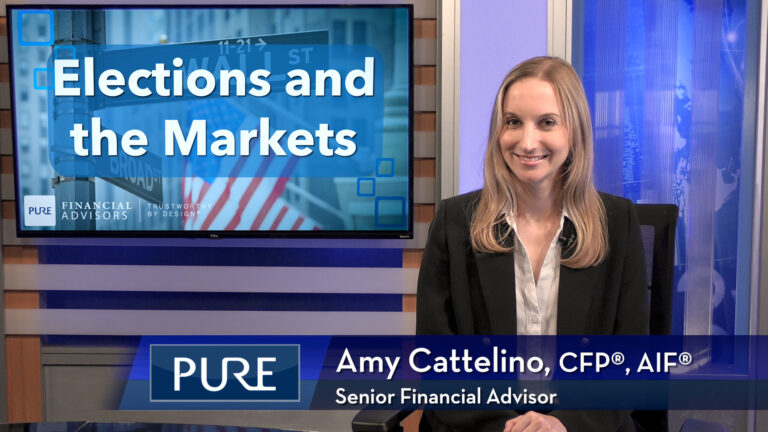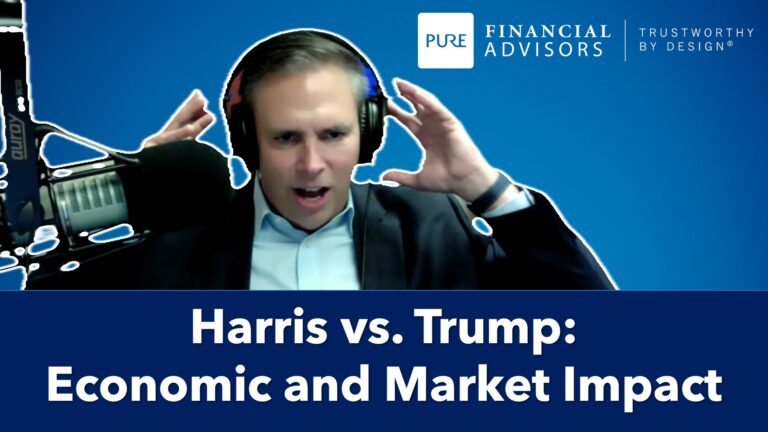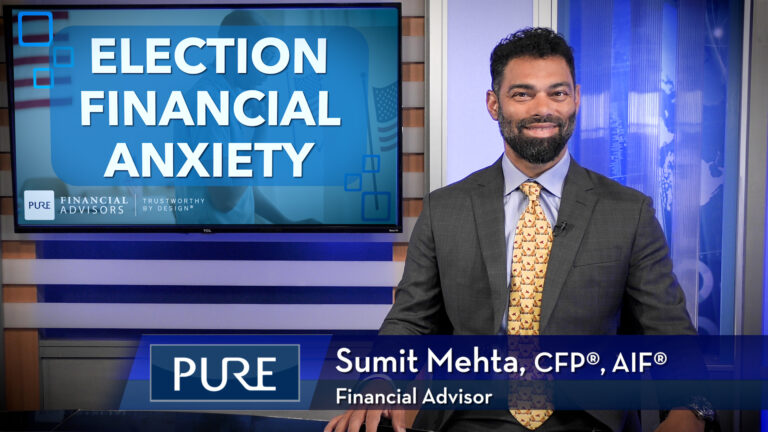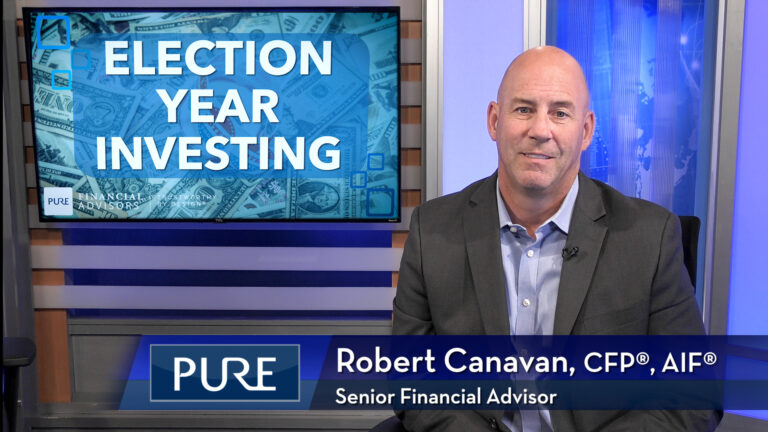Several common investment products include mutual funds, index funds, and exchange-traded funds (ETFs). While all aim to offer diversified investment opportunities and professional management, they diverge in management style, trading mechanisms, and tax implications. Pure’s Financial Advisor, Tony Vu, CFP®, AIF®, reveals these nuances, equipping investors with the knowledge needed to make informed decisions aligned with their financial objectives and risk tolerance.
He discusses:
- Management Style
- Trading
- Cost Structure
- Tax Considerations
FREE GUIDE | Investing Basics Guide
Transcript
In the dynamic world of investments, mutual funds, index funds, and exchange-traded funds (ETFs) are fundamental instruments to building a portfolio. Each offers distinct features catering to diverse investor preferences, risk appetites, and financial goals. Understanding their similarities, differences and key features can help you determine where they fit best in your portfolio.
At their core, all three investments pool investor money together to invest in a portfolio of different securities, offering a convenient way to access a broad spectrum of assets with a relatively small amount of capital. Additionally, they provide professional management by experienced fund managers. Since these all pool investments together, they also carry internal costs known as operating expense ratios. Consider these investment vehicles as slices of a pie. Rather than investing the time and effort into sourcing ingredients and baking an entire pie yourself, these investments offer you the advantages of enjoying a full pie without the need to undertake all the preparation work yourself. Furthermore, mutual funds, index funds, and ETFs offer investors the advantage of liquidity, allowing them to buy and sell shares in the open market. This liquidity enhances flexibility, enables investors to react to market changes and capitalize on opportunities, or adjust their portfolios as needed.
Management Style
Now, let’s talk about the differences such as the management style. Mutual Funds are actively managed by professional portfolio managers who aim to outperform the market, benchmark, or employ a unique strategy. These managers regularly buy and sell investments within the fund to achieve their objectives.
Index Funds, on the other hand, are structured like mutual funds but instead are passively managed to replicate the performance of a specific market index, such as the S&P. They aim to match the returns of the index by holding the same securities in the same proportions.
ETFs, however, can be either actively or passively managed, but most commonly follow an index. They trade on an exchange like stocks, with prices fluctuating throughout the day based on supply and demand.
Trading
Mutual Funds and Index Funds only trade once during the day since buys and sales are regulated by the fund. They trade at net asset value which is calculated at the end of each trading day.
ETFs on the other hand, trade on exchanges throughout the day at market prices just like stocks. Their prices are controlled by supply and demand.
Cost Structure
Mutual Funds typically have higher operating expense ratios due to their active management. They also potentially come with sales charges that investors have to pay up front or when they sale their shares.
Index Funds, however, tend to have lower operating expense ratios than actively managed mutual funds since they are passively managed.
ETFs have lower expense ratios compared to mutual funds. But can carry trading costs or commissions since they trade through exchanges.
Tax Considerations
This applies to investments held outside of a retirement account. With Mutual Funds, due to their active management, they tend to be less tax efficient. The transactions that occur throughout the course of the year can result in capital gains distributions to the investor that becomes taxable in that year. This is despite not even selling the fund they own.
With Index Funds, due to their passive management style, they tend to have lower portfolio changes, resulting in fewer taxable events. This can lead to reduced capital gains distributions, potentially lowering investors’ tax liabilities.
ETFs, similar to index funds, since they lower portfolio changes, there’s fewer capital gains distributions compared to actively managed mutual funds. Additionally, ETF investors have the flexibility to control when they realize capital gains by choosing when to buy or sell shares and since they are traded throughout the day, that allows investors to take advantage of using them to do things such as tax loss harvesting.
While mutual funds, index funds, and ETFs share common objectives of providing diversified investment opportunities and professional management, they differ in their management style, how they’re traded, and cost and tax implications. Understanding these distinctions empowers investors to make informed decisions aligned with their financial objectives, risk tolerance, and tax considerations. By leveraging the unique features and advantages of each vehicle, investors can build portfolios tailored to their needs, while controlling cost and taxes.
Take advantage of our free financial assessment to review your portfolio to see what you own, why you own and if it makes sense to adjust your portfolio, so it’s better aligned with your objectives.
Subscribe to our YouTube channel.
IMPORTANT DISCLOSURES:
• Investment Advisory and Financial Planning Services are offered through Pure Financial Advisors, LLC, a Registered Investment Advisor.
• Pure Financial Advisors LLC does not offer tax or legal advice. Consult with your tax advisor or attorney regarding specific situations.
• Opinions expressed are subject to change without notice and are not intended as investment advice or to predict future performance.
• Investing involves risk including the potential loss of principal. No investment strategy can guarantee a profit or protect against loss in periods of declining values.
• All information is believed to be from reliable sources; however, we make no representation as to its completeness or accuracy.
• Intended for educational purposes only and are not intended as individualized advice or a guarantee that you will achieve a desired result. Before implementing any strategies discussed you should consult your tax and financial advisors.
CFP® – The CERTIFIED FINANCIAL PLANNER™ certification is by the Certified Financial Planner Board of Standards, Inc. To attain the right to use the CFP® designation, an individual must satisfactorily fulfill education, experience and ethics requirements as well as pass a comprehensive exam. Thirty hours of continuing education is required every two years to maintain the designation.
AIF® – Accredited Investment Fiduciary designation is administered by the Center for Fiduciary Studies fi360. To receive the AIF Designation, an individual must meet prerequisite criteria, complete a training program, and pass a comprehensive examination. Six hours of continuing education is required annually to maintain the designation.














